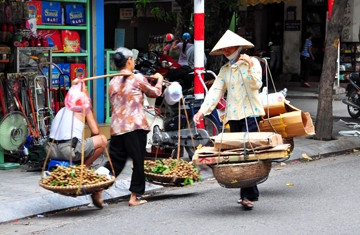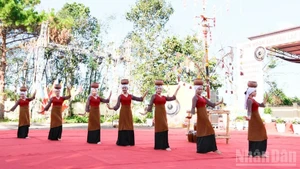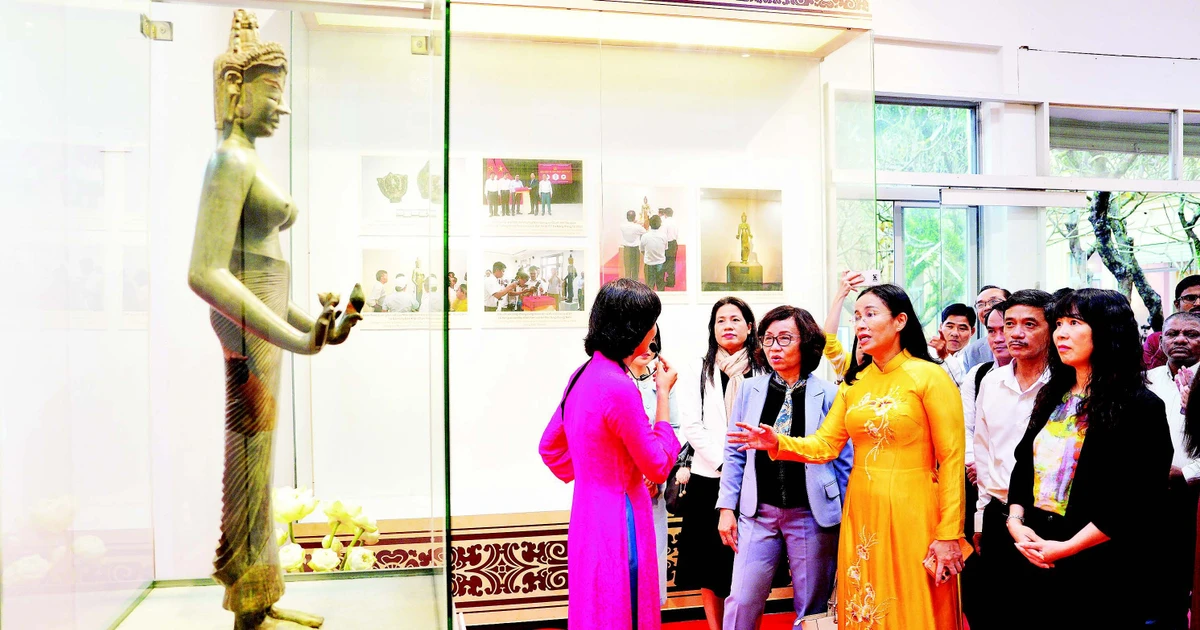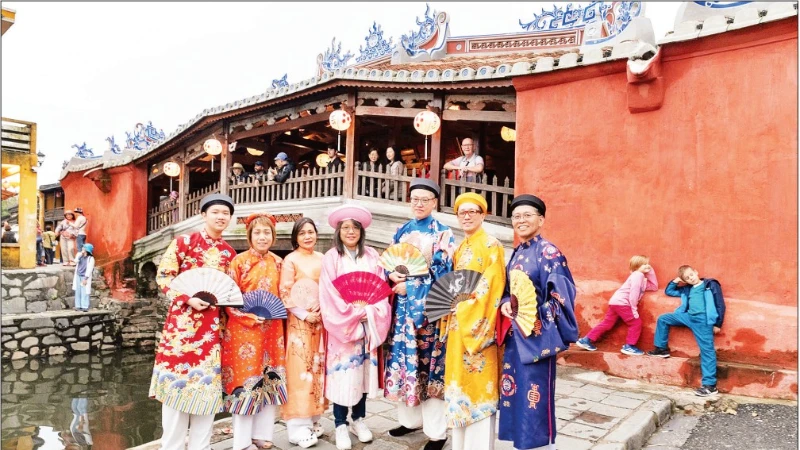In the subconscious mind of the Vietnamese people, the image of the bamboo shoulder pole evokes the daily lives of traditional farmers—their joy and their sorrow—and especially the silent suffering, courage, tolerance and sacrifice of the wives, mothers and grandmothers of successive generations in the nation’s history.
The country may be categorised as a wet rice civilisation. Both field bunds and village roads are small, so shoulder poles are often the only appropriate carrying device. They can be made of different materials, but are most commonly made of bamboo, which grows as widely as does the rice.
Despite changes brought on by industrialisation and modernisation, shoulder poles remain the main carriers of 80 percent of the rural population.
The beautiful and intriguing image of shoulder poles has attracted foreigners with inquiring minds. American writer E. Shillue noticed them with great interest immediately upon his arrival: ‘A vendor carries on her shoulder the most romantic thing in the East – a shoulder pole. She gently swings herself out of an alley’ (quoted from Country, published by University of Massachusetts Press in 1997). During the time under French colonialism, many French writers described with affection the scene in which rural women in rows carried vegetables and fruits in shoulder poles along the dikes.
It requires effort to produce an appropriate shoulder pole for a given job. According to poet Thanh Hao, who is famous for poems about traditional rural life, an appropriate bamboo tree for making a shoulder pole should not be a big one with short tops that is infested with ants. The stem near the root, with seven or nine even culms, is used for making shoulder poles. It is a taboo to make a shoulder pole with an even number of culms, as it is thought that these shoulder poles are not good for business and do not bring good fortune. It is also said that inappropriate shoulder poles not only cause pain in the shoulder, but also bring bad luck and hardship.
Bamboo shoulder poles are used as a metaphor for burning shoulders in a poem by Nguyen Du (Don ganh tre chin ran hai vai).
City dwellers, who used to carry rice with shoulder poles in support of the national fight against French colonialism or to haul soil in the socialist working campaigns of the 1970s and 1980s, must have little love for the tools. Meanwhile, women have walked dozens of kilometres to market carrying twenty- or thirty-kilogram loads in shoulder poles for generations.
Shoulder poles and ropes for suspending objects symbolise the relationship between husband and wife, which cannot be broken, and the wives who shoulder the responsibility of taking care of their husband’s family.
Shoulder poles are also imprinted on the memories of rural residents as integral to their lives, as they are used when they go to market, when they build homes and when they carry things to festivals, weddings and funerals. They have also contributed to fighting against invaders throughout the nation’s history.
















